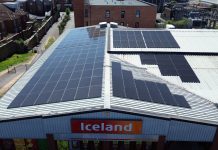Essar and Progressive Energy have joined forces to set up a venture to produce low carbon ‘blue’ hydrogen at Essar’s Stanlow Refinery in Ellesmere Port, Cheshire. Blue hydrogen is created from fossil sources, where the carbon emissions are captured and stored
The joint venture will manufacture hydrogen at the refinery for use across the HyNet region. It will provide Essar Oil UK with low carbon hydrogen to decarbonise its own energy demand in addition to creating a hydrogen economy across North West England and North East Wales.
Natural gas, and fuel gases from the refinery, will be converted into low carbon hydrogen, with carbon dioxide captured and stored offshore in sub-surface reservoirs in Liverpool Bay. The hydrogen production hub will deliver clean energy to industry in the HyNet ‘low carbon cluster’, as well as to fuel buses, trains and heavy goods vehicles, to heat homes and generate electricity when the sun is not shining or the wind blowing.
The UK’s first low carbon hydrogen hub will initially produce 3 terawatt-hours (TWh) of low carbon hydrogen each year from 2025. This will be followed by a facility twice this size giving a total capacity of over 9TWh of hydrogen per annum. A total investment of approximately £750m will be committed to deliver the two hydrogen production hubs. Follow on capacity growth is planned to reach 80% of the Government’s new target of 5GW of low carbon hydrogen for power, transport, industry and homes by 2030.
The project will use Johnson Matthey’s Low Carbon Hydrogen technology. In partnership with SNC-Lavalin, engineering is well advanced with funding provided by the UK Government’s hydrogen supply competition.
Stein Ivar Bye, Chief Executive Officer, Essar Oil UK, commented, “Hydrogen has a central role to play in our low carbon energy solution. We are demonstrating that the industry is committed to play its part of the UK’s transformational hydrogen strategy.”




Carbon capture is only up to 95% and usually less, so as this article says, this development is low carbon, not zero carbon, so it should not be labelled as clean energy, and the economics of deep geological storage under pressure at scale is not proven. It is however a useful stepping stone to 2050, but must be phased out by then.